Table of contents
Real caraway seeds ( raw) come from the caraway plant ( Carum carvi - also called meadow caraway and an umbelliferous plant). Caraway seeds are known for their distinctive taste and medicinal effects.
Using caraway seeds in the kitchen:
Caraway seeds are used in the kitchen whole (in dried form) or ground (as powder). They are particularly popular in Austria, southern Germany and the Czech Republic. The seeds are used to season savoury dishes, in soups (e.g. raw vegan celery and apple cream soup with caraway and nutmeg), sauces and salads; or they are added to stews, vegetable dishes and raw vegetables. They are used in potato dishes and in hard-to-digest meals with cabbage or very fatty foods. A classic is sauerkraut with juniper berries and caraway seeds. The seeds are also used to season baked goods (e.g. bread, rolls or dried onion cake with buckwheat and sauerkraut).
Can you eat caraway seeds raw? You can eat caraway seeds raw. They are vegan and can add flavor to whole-food recipes.
Alcoholic beverages such as caraway liqueur or caraway brandy are made from the oil of the seeds. Caraway tea, brewed from the seeds, is also common.
Caraway has a spicy, hot and slightly bitter taste, but is milder than cumin, and goes well with other spices. It goes well with fennel, chili, juniper and pepper, but also onions, garlic or perhaps ginger.
You should be careful when portioning: half to one teaspoon of whole seeds or a pinch of caraway powder is usually enough for a dish for four people. If you use whole seeds, it is advisable to crush them before use, as this allows the aromatic oil to escape more easily. The taste of the seeds (raw) is then more intense than that of the powder.
Vegan recipe for kohlrabi vegetables with caraway seeds:
Ingredients (for 4 people): 4 kohlrabi, 1 red onion, 1 tbsp rapeseed oil, 1 tbsp flour, ½-1 tsp caraway (organic), 1 tsp salt.
Preparation: Peel the raw onions and cut them into small pieces. Peel the kohlrabi and grate it on a grater. Heat oil in a pan and add the onions. Sauté them until translucent and add the grated kohlrabi. Season the vegan vegetables with salt and organic caraway seeds, dust with a little flour to taste and sauté for another 15 minutes.
Tea preparation / recipe for fresh caraway tea:
For fresh caraway tea, briefly crush 1-2 teaspoons of raw caraway seeds (dried) with a mortar so that the oil contained in the seeds can escape. Put the seeds in a cup and pour boiling water over them. Cover and let the tea steep for about 10 minutes.
Vegan recipes with caraway seeds can be found under the note: " Recipes that have the most of this ingredient ".
| Not only vegans or vegetarians should read this: Vegans often eat unhealthily. Avoidable nutritional errors. |
Shopping - where to buy caraway seeds?
You can buy caraway seeds ground or as whole seeds. Real caraway seeds and/or powder made from them can be found at major retailers such as Coop, Migros, Denner, Volg, Spar, Aldi, Lidl, Rewe, Edeka, Hofer all year round, also in organic quality (organic). You can also find the seeds (raw) and their products in organic shops, organic supermarkets (e.g. Alnatura or Denn's Biomarkt), health food stores, online retailers and sometimes at weekly markets. You should prefer small quantities as this will preserve the aroma for longer.
The caraway seeds are vegan - and readily available in raw food quality (raw). Raw quality is likely with regional organic products: Due to the low moisture content, caraway seeds can be gently dried at an air temperature of approx. 40 °C (= approx. 30-35 °C product temperature) and with local organic caraway seeds, there is no need for disinfection by steam sterilization. 14
Found in the wild:
The caraway plant can be found scattered throughout Europe and Asia. 1 It grows in nutrient-rich meadows and on roadsides, especially in low mountain ranges. 2 Caraway is part of the manure flora. 3 The plant flowers from May to June (or July 17). The brown fruits of the wild plants can be harvested from around July to September. 17
Storage:
Whole caraway seeds last 3-5 years, ground caraway 6-9 months. The spice should be kept dry and cool. Over time, it loses its aroma. To dry fresh caraway, hang the seed heads on the stem over a container. 4
Caraway ingredients - nutritional values - calories:
Here we realistically show you the ingredients of spices and herbs per 1 g (instead of per 100 g as usual - except for the amino acids).
Caraway seeds are known for the flavonoids carotene, lutein, cryptoxanthin and zeaxanthin they contain, as well as coumarins and essential oils (limonene, carvone, carveol, cuminicaldehyde and furfurol), which make up 3-7% of the grain. Fatty oil (up to 20%), polysaccharides and traces of furocoumarins are also found. 5,6,7
Caraway seeds contain 3.33 kcal/1g. The fiber content is good at 0.38 g/1g. Proteins are also well represented at 0.2 g/1g. 8
The tryptophan content of caraway is negligible in normal consumption quantities. Calculated per 100 g, it would be a good 0.24 g. This is similar to the content of fennel seeds (0.25 g/100g), more can be found in chia seeds (0.44 g/100g, 176% of the daily requirement). 8 The same applies to threonine : Calculated per 100 g, it would be present at 0.76 g. The content is comparable to sesame (0.74 g/100g). Soybean seeds are further ahead with 1.8 g/100g, but we consume significantly more of them. 8
A similar amount of calcium (6.89 mg/1g) is present in allspice (6.61 mg/1g), while poppy seeds contain 14.38 mg/1g. 8
The ratio of LA : ALA (21:1) is comparable to that of pecans. Since the Federal Nutrition Commission recommends a ratio of <5:1, caraway seeds do not have optimal values, but are not in the extremely deficient range either. 8
The complete ingredients of caraway seeds (caraway ingredients), the coverage of the daily requirement and comparison values with other ingredients can be found in our nutrient tables. In the article Nutrients explained you will get a detailed insight into the topic.
Dangers - Intolerances - Side effects:
During pregnancy, it is not advisable to consume concentrated caraway oil without consulting a doctor. The same applies if you are hypersensitive to caraway or allergic to umbelliferous plants. You should not take the oil in high doses over a long period of time. This could lead to liver and kidney damage. 7 If you have existing liver damage or gallbladder problems, you should not use caraway seeds. Caraway seeds are not recommended as a natural remedy for children and adolescents. 1
Health aspects - effects:
What is caraway? Caraway seeds are considered the best-known herbal carminative (a remedy for flatulence). The seeds promote the secretion of gastric juice and have antispasmodic properties. Caraway seeds work against intestinal fungi and harmful bacteria. It is believed to have a cancer-protective effect. 5
The seeds are said to stimulate the appetite and be antimicrobial and help with digestive problems, Roemheld syndrome (reflex heart problems caused by gas accumulation in the intestines and stomach) and irritable bowel syndrome, and have an effect on the proliferation (growth) of various intestinal bacteria. 9 Caraway is said to stimulate the production of breast milk, which is why it is a typical ingredient in breastfeeding teas. 5
A possible effect as a bioenhancer is obvious: caraway could increase the effectiveness of established medicines. 9
Caraway - use as a recognized medicinal plant:
The seeds of caraway are used as grain drugs. 10 Caraway oil (Carvi aetheroleum) is obtained from caraway seeds through steam distillation. This consists of 60% of the monocyclic monoterpene carvone, on which the main effect of caraway is said to depend. 11
The Herbal Medicinal Product Committee ( HMPC) has classified the caraway plant and its oil as a traditional herbal medicinal product (according to Section 39a of the Medicines Act). The quality of the caraway fruits (Carvi fructus) and the caraway oil (Carvi aetheroleum) is defined in the European Pharmacopoeia.
The European Scientific Cooperative of Phytotherapy attributes caraway oil to relief from digestive problems, bloating, flatulence and gastrointestinal cramps.
Commission E of the Federal Institute for Drugs and Medical Devices ( BfArM) in Bonn also recommends caraway for dyspeptic complaints such as mild gastrointestinal problems, feeling of fullness and flatulence.
The crushed caraway seeds can be brewed as tea. They can also be bought in ready-made tea bags. Alcoholic extracts are available in drop form and dry extracts in dragee form. Caraway oil is sold in gastro-resistant capsules or liquids. Caraway seeds are often processed in combination with other medicinal herbs or essential oils with similar effects, 1 eg from fennel seeds or anise (also in the form of suppositories 11).
Folk medicine - natural medicine:
Since ancient times, the raw seeds have been used in folk medicine for a variety of indications (from Northern Europe to the Mediterranean regions, Russia, Iran, Indonesia and North America). The caraway plant is also documented in indigenous healing methods. 12 The caraway oil can be taken several times a day (with a piece of sugar) or, better still, dissolved in water (3-5 drops each time) or used dissolved in 10% oil (e.g. rapeseed oil) to rub the stomach. This makes it suitable for babies and small children. 1,9
Occurrence - Caraway origin - Ecology:
Where does caraway come from? The caraway plant is one of the earliest cultivated herbs in Asia, Africa and Europe. 12 This makes it one of the oldest spices. Caraway plants are cultivated primarily in Holland, East Germany, Poland and Egypt. 1
Growing in the garden or as a potted plant:
Unlike most Mediterranean kitchen herbs, caraway thrives in moist, loamy soil in a partially shaded to sunny location. Because of incompatibilities, the plant should be kept at a sufficient distance from other Apiaceae such as carrots, fennel or dill. Caraway can also be grown in a pot. Use a sufficiently large pot, as caraway develops a taproot of around 15 cm.
Caraway can be sown outdoors from April. The plant can be grown in a pot on the windowsill from February. After about three weeks at an average temperature of 20 °C, the umbelliferous plant begins to germinate. It flowers in May and June. If you let the plant bloom, the flower heads turn brown from around July, and then you can harvest. The caraway plants are cut off whole, as you can use the seeds, leaves and roots.
How does caraway grow? Caraway is a biennial plant. In the first year it grows without producing much benefit, and in the second year it flowers. If you leave it to flower after the second year, it will self-seed and flower again the following spring. You can also sow caraway in July or August, as the plant does not produce seeds in the first year. Watering is very important for caraway plants. A little compost before sowing is also beneficial. 13
Cultivation - Harvest:
Where does caraway grow? True caraway is a meadow plant (see "Wildly found"). It is grown in European latitudes. The umbelliferous plant does not have high demands on its location. It grows on both shallow soils and at higher altitudes. It is frost-resistant. It is usually grown as an undersow in spring, but it can also be found as a bare seed (sowing time from early April to mid-May). Carum carvi is quite difficult to keep free of weeds. The most dangerous pest is the caraway moth. This can cause considerable yield losses. 3
In large-scale cultivation, cultivation breaks of seven to ten years should be observed. One hectare yields 1,000 to 2,000 kg of pure product. The harvested seeds must be dried immediately (after no more than seven hours) at a maximum of 35 °C (product temperature) to less than 10% moisture. Harvesting usually takes place shortly before the seeds fall off or turn black. It is also important not to crush the seeds, otherwise oil will leak out, which will make the harvest rancid more quickly. 3
The best time to harvest the leaves is from April to May, the flowers are best harvested from June to July and the root crops from September to March. Caraway seeds are best harvested from August to September, 5 sometimes as early as July. Seeds (raw) that are used as medicine mostly come from cultivated crops (eg from Poland, the Netherlands, Hungary, Egypt). 9
Ecological aspects:
In Germany, 46 hectares of caraway are cultivated in organic farming. For economic reasons, meadow caraway is mainly used as an undersow in a cover crop. This usually yields lower than when sowing a cereal crop. In organic farming, the average yield is 8.5 dt/ha (decitons per hectare) of cleaned caraway, with fluctuations of 2 to 24 dt/ha. Compared to conventional farming (15 dt/ha), the yield is 47% lower. Batch drying systems or wagon drying are usually used for drying. 15
Risk of confusion and possibilities of confusion:
The caraway seeds of the common caraway (Umbelliferae) are often confused with the seeds of the cumin (Umbelliferae, Cuminum cyminum), with the common black cumin (Buttercup family, Nigella sativa) or with the royal caraway (or ajowan, Umbelliferae, Trachyspermum ammi).
Cumin is related to caraway and looks similar, but it has a completely different flavor. While caraway is milder, cumin has a spicier, almost hot and very dominant flavor.
What is the difference: caraway and cumin? Like caraway, cumin seeds belong to the umbelliferous family. Caraway, also known as ajowan, is rarely found in western latitudes. Its taste, appearance and origin are similar to those of caraway.
Should I use black cumin or cumin? Black cumin and cumin are not related, but they taste similar. Real black cumin tastes more nutty, slightly peppery and bitter. Black cumin oil is particularly common in naturopathy.
Caraway should be collected from meadows with caution. Fool's parsley ( Aethusa cynapium) and hemlock ( Conium maculatum) are very similar to caraway, but are poisonous. 11 They can be distinguished by differences in the flower stalk. The leaf shape and inflorescence are similar. 5
General information about caraway seeds:
What are caraway seeds? Real caraway seeds ( Carum carvi L.) come from the Apiaceae family. 16 The biennial plant reaches a height of up to 60 cm. It is an aromatically scented herb, has bipinnate leaves, small white flowers in umbels and 3-6 mm long, brown fruits with light, angular protruding ribs. 2,11 Caraway seeds are the sickle-shaped fruits, also called caraway seeds.
Alternative names for caraway seeds:
The questions What is caraway seed?, Caraway seed what is that? or What are caraway seeds? are common. Seed and seed mean the same thing. Meadow caraway seeds are therefore also called caraway seeds.
Alternative names for caraway are meadow caraway (meadow caraway), spice caraway (spice caraway) or common caraway. It is also spelled Kuemmel. Often you will find incorrect spellings such as caraway seeds, caraway seeds, caraway seeds, caraway, meadow caraway.
Caraway in English: It is called caraway or caraway seeds. In Italian, the term cumino is used. Keménymag means hard core in Hungarian and describes caraway seeds. In Russian, caraway is written as тмин (Tmin), in Arabic as كراوية (karawia).
Keywords for use:
It is not just the seeds of the caraway plant that are used. Can you eat caraway raw? The young leaves (see above for harvest) can be used raw as a caraway spice. They have a mild taste, similar to dill or parsley. The root of the caraway plant before it has flowered is also edible. This is harvested in autumn and cooked or added to soups. It is similar to carrots. The flower buds can be eaten raw or added to vegetable and potato dishes. They also go well with soups or pickles. The aroma of the plant parts is similar to caraway, but a little milder.
Chewing caraway or caraway seeds: This is said to help combat bad breath.
The antimicrobial properties of caraway are used in mouthwashes and gargles. 5 The oil is also used in massages and as a bath additive.
Literature - Sources:
Bibliography - 17 Sources (Link to the evidence)
| 1. | Arzneipflanzenlexikon.info Kümmel. |
| 2. | Spektrum.de Kümmel. |
| 3. | Ooe.lko.at Bio-Kümmel. |
| 4. | Bremness L. Der Gute Tip - Das Hausbuch der Kräuter. Dorling Kindersley Verlag. 1990. |
| 5. | Fleischhauer SG, Guthmann J, Spiegel R. Essbare Wildpflanzen - 200 Arten bestimmen und verwenden. AT Verlag, 2013. |
| 6. | Teuscher E. Gewürzdrogen – Handbuch der Gewürze, Gewürzkräuter, ihrer ätherischen Öle und der Gewürzmischungen. WVG, Stuttgart 2003: 201-205. |
| 7. | Flexikon.doccheck.com Kümmel. |
| 8. | USDA United States Department of Agriculture. |
| 9. | Deutsche-apotheker-zeitung.de Kümmel ist Arzneipflanze 2016. Sowie: Kümmel – mehr als ein Gewürz! Potenzial als Antiadipositum und Bioenhancer. |
| 10. | Oekolandbau.de Arznei- und Gewürzpflanzen. |
| 11. | Iva.de Echter Kümmel ist Arzneipflanze des Jahres 2016. |
| 12. | Johri RK. Cuminum cyminum and Carum carvi: An update. Pharmacognosy reviews. 2011;5.9:63. |
| 13. | Plantura.garden Kümmelanbau im eigenen Garten leicht gemacht. |
| 14. | Heuschrecke.com Trocknungsverfahren für Kräuter und Gewürze. Nicht alles geht als Rohkost - differenzierte Betrachtung. 2014. |
| 15. | Geschäftsstelle Bundesprogramm Ökologischer Landbau in der Bundesanstalt für Landwirtschaft und Ernährung (BLE). Analyse der ökologischen Produktionsverfahren von Heil- und Gewürzpflanzen in Deutschland. 2003. |
| 16. | Theplantlist.org Carum carvi L. |
| 17. | Pahlow M. Das grosse Buch der Heilpflanzen. Gesund durch die Heilkräfte der Natur. Nikol Verlagsges. mbH: Litauen; 2013: 200-202. |

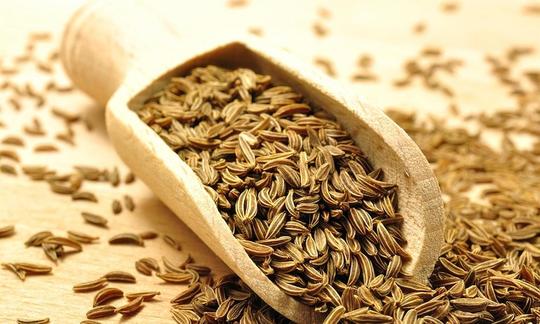

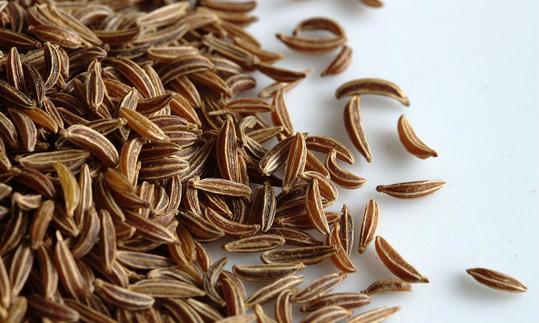

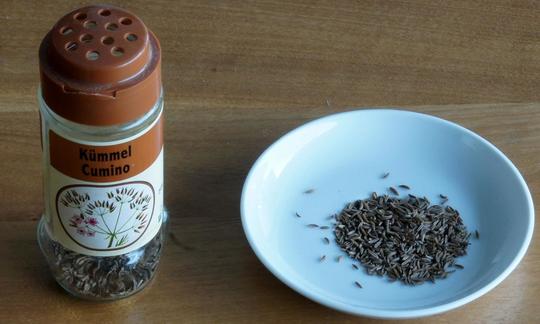

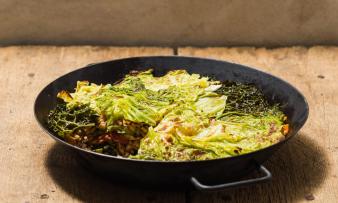
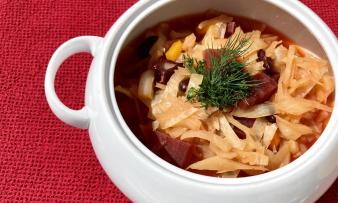
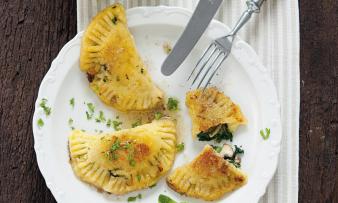





Comments